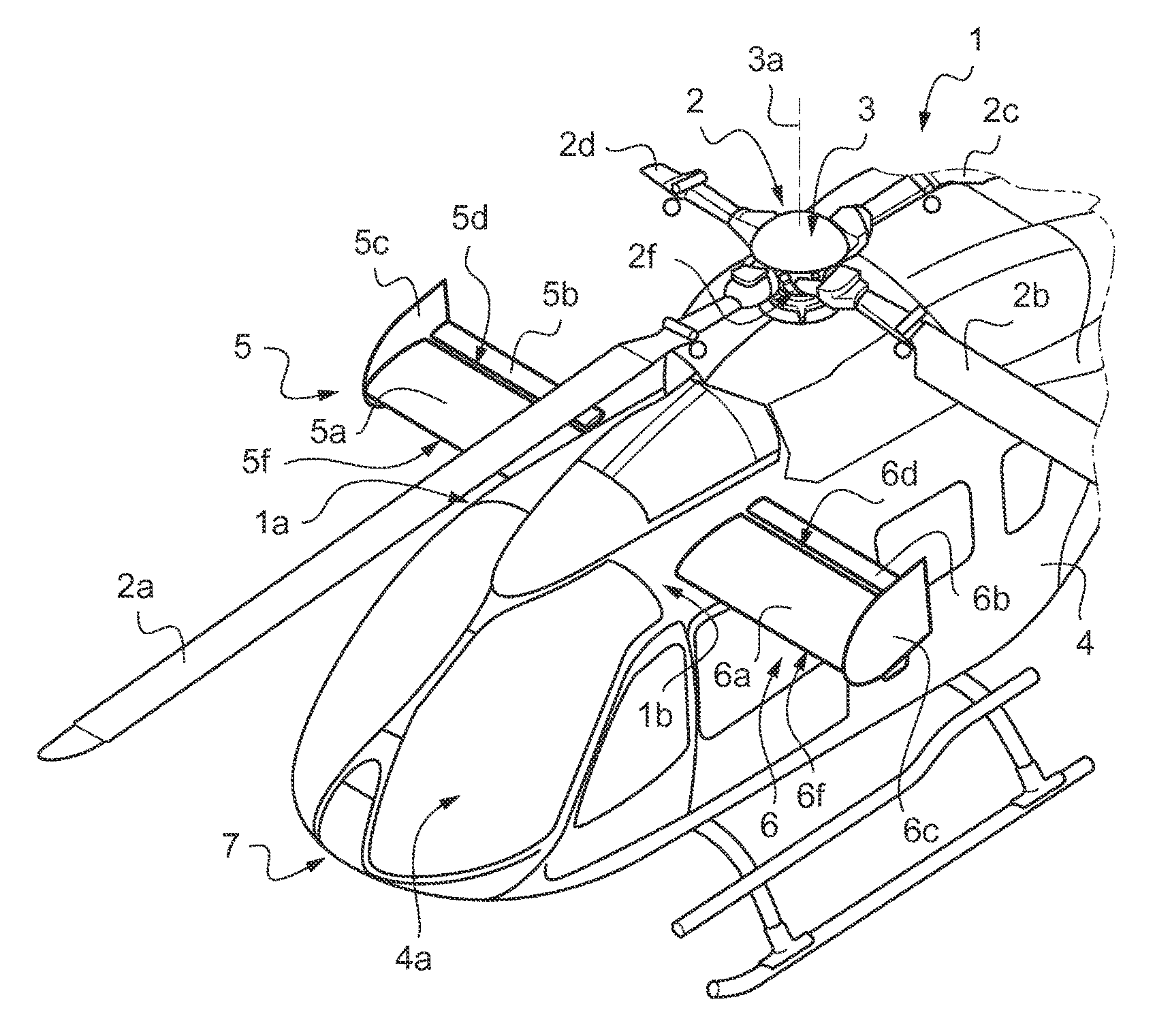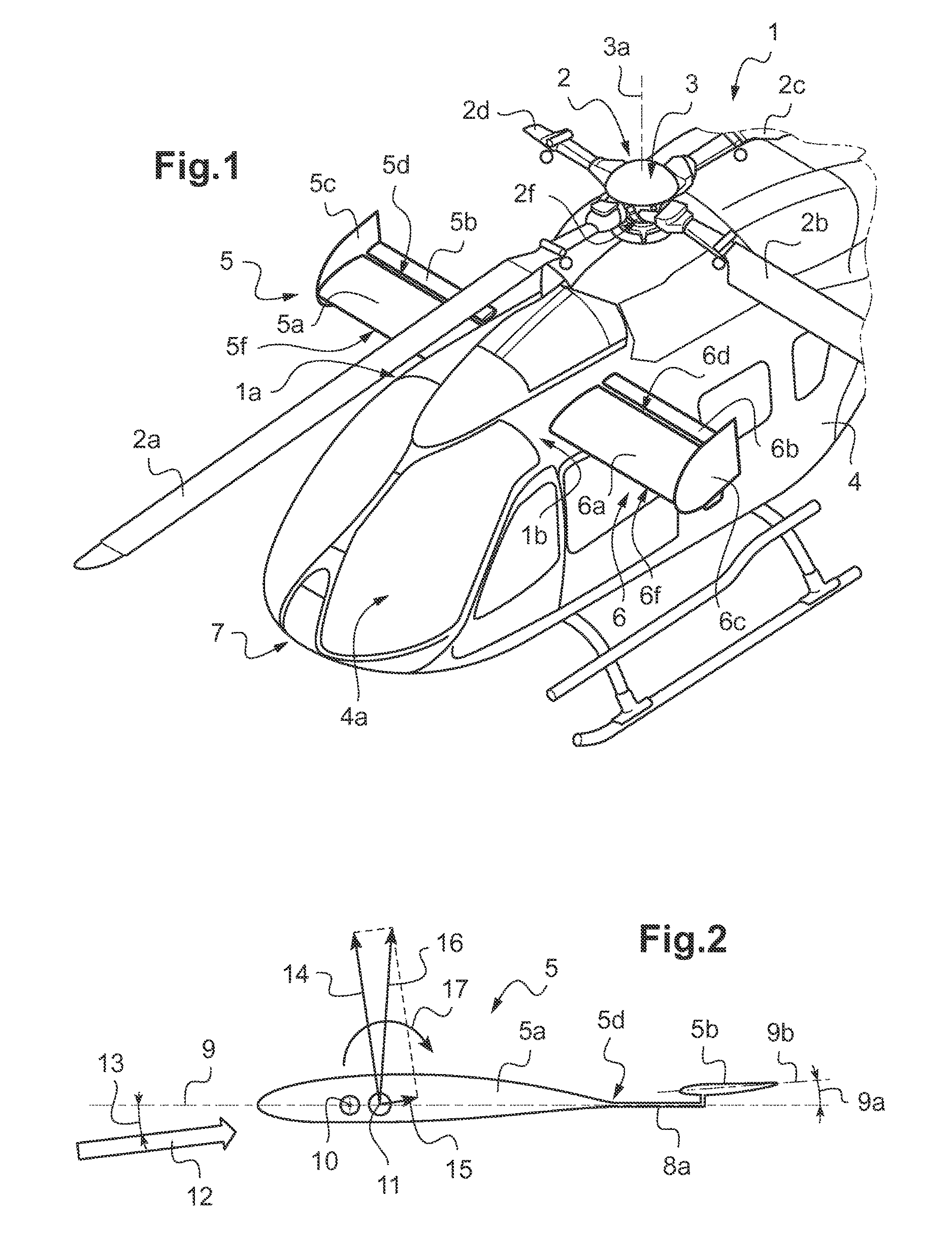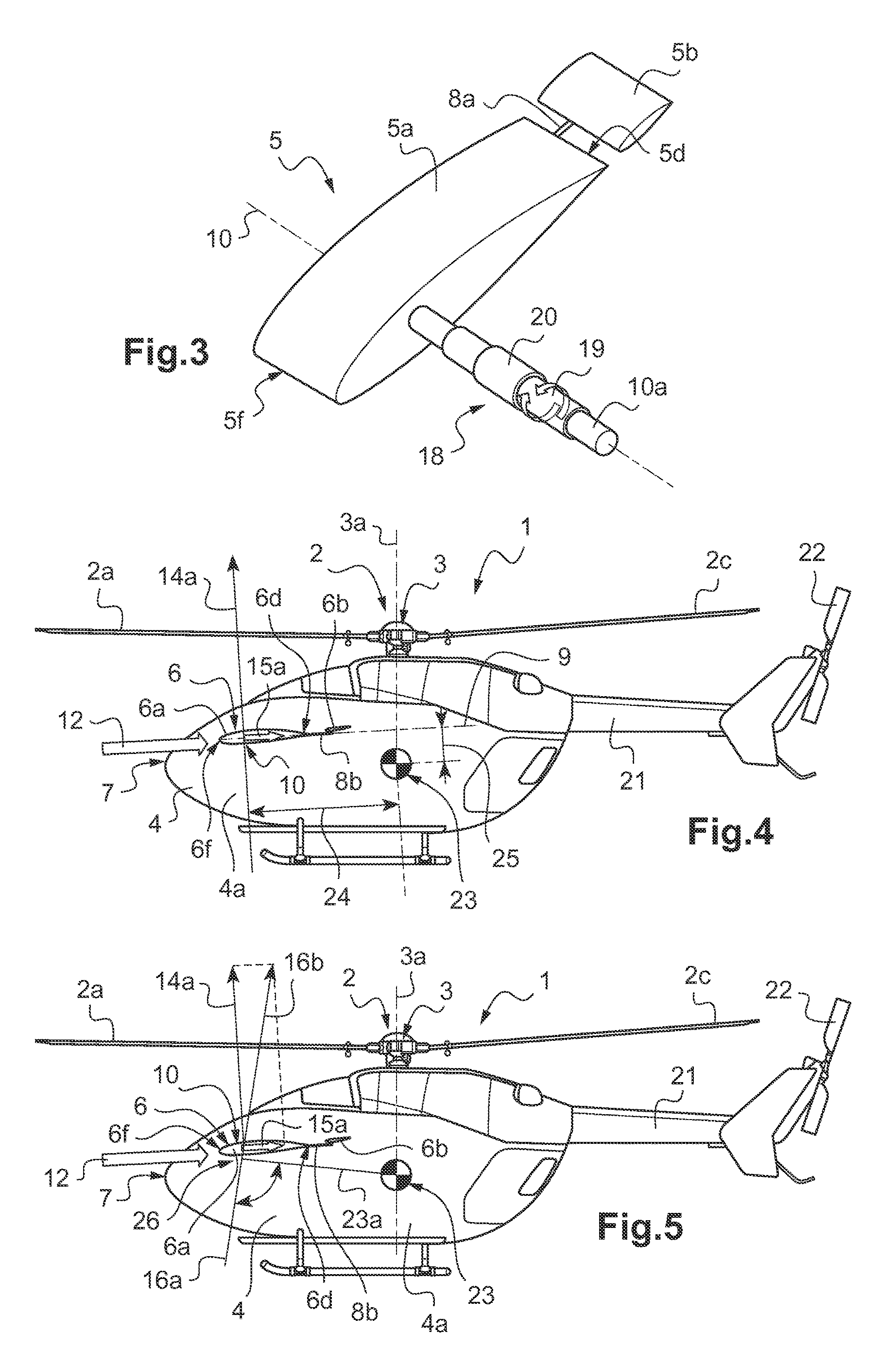Rotorcraft with a fuselage and at least one main rotor
a technology of fuselage and main rotor, which is applied in the direction of sustainable transportation, transportation and packaging, and efficient propulsion technologies, can solve the problems of comparatively low maintenance effort of inventive passive wing-type aerodynamic devices, and achieve the effects of reducing power consumption, advantageously increasing the main rotor, and expanding the flight envelope of the rotorcra
- Summary
- Abstract
- Description
- Claims
- Application Information
AI Technical Summary
Benefits of technology
Problems solved by technology
Method used
Image
Examples
Embodiment Construction
[0074]FIG. 1 shows a rotorcraft 1 with a fuselage 4 and a main rotor 2. The rotorcraft 1 is illustratively embodied as a helicopter and the main rotor 2 is illustratively embodied as a hingeless or a hinge- and bearingless multi-blade rotor having a plurality of rotor blades 2a, 2b, 2c, 2d. It should, however, be noted that the present invention is not limited to helicopters and may likewise be applied to other aircrafts that are equipped with rotary wings, independent on whether these rotary wings define articulated, hingeless or hinge- and bearingless multi-blade rotors. It should further be noted that the present invention may also be applied in cases where more than one main rotor is provided.
[0075]The main rotor 2 and, thus, the plurality of rotor blades 2a, 2b, 2c, 2d is drivable, i.e. controllable to influence an associated pitch attitude Θ of the rotorcraft 1 in operation, which assumes varying pitch attitudes in operation. Preferably, the main rotor 2 is configured to be dr...
PUM
 Login to View More
Login to View More Abstract
Description
Claims
Application Information
 Login to View More
Login to View More - R&D
- Intellectual Property
- Life Sciences
- Materials
- Tech Scout
- Unparalleled Data Quality
- Higher Quality Content
- 60% Fewer Hallucinations
Browse by: Latest US Patents, China's latest patents, Technical Efficacy Thesaurus, Application Domain, Technology Topic, Popular Technical Reports.
© 2025 PatSnap. All rights reserved.Legal|Privacy policy|Modern Slavery Act Transparency Statement|Sitemap|About US| Contact US: help@patsnap.com



